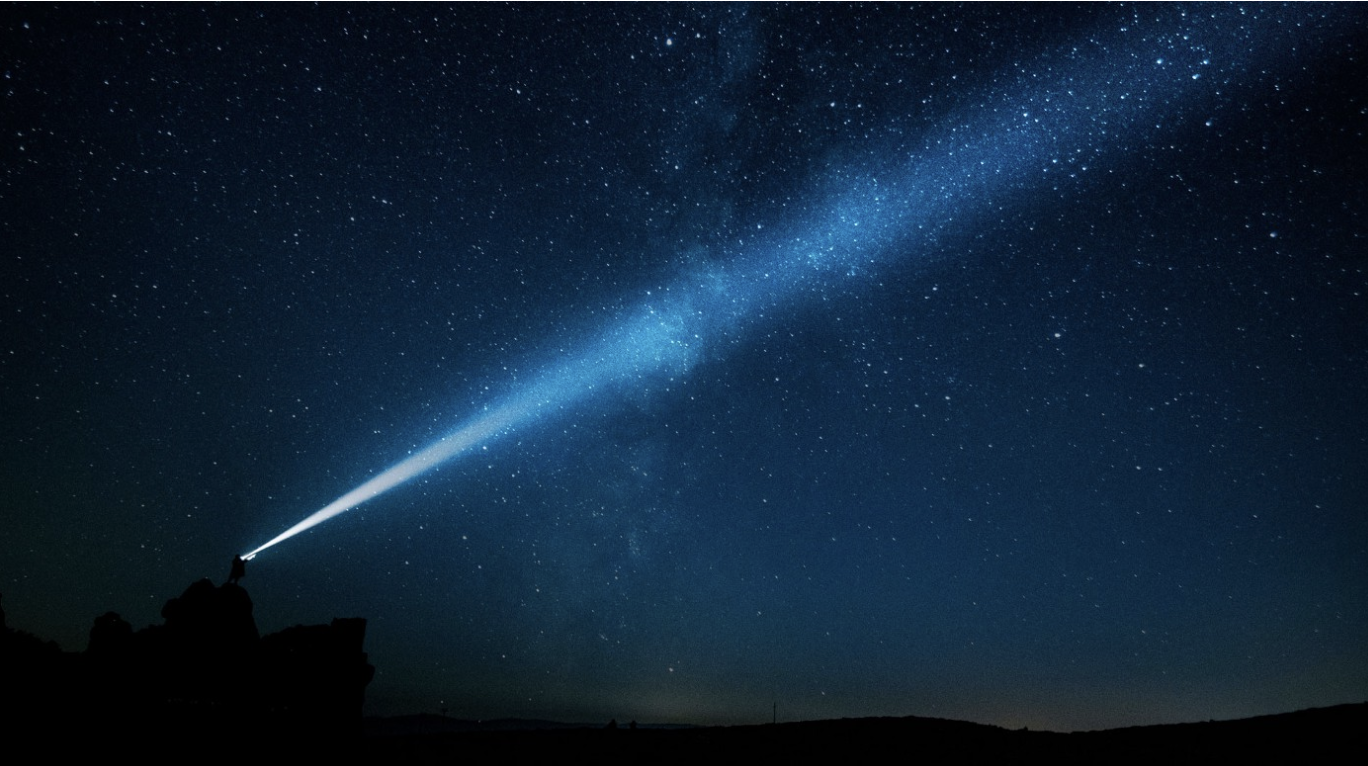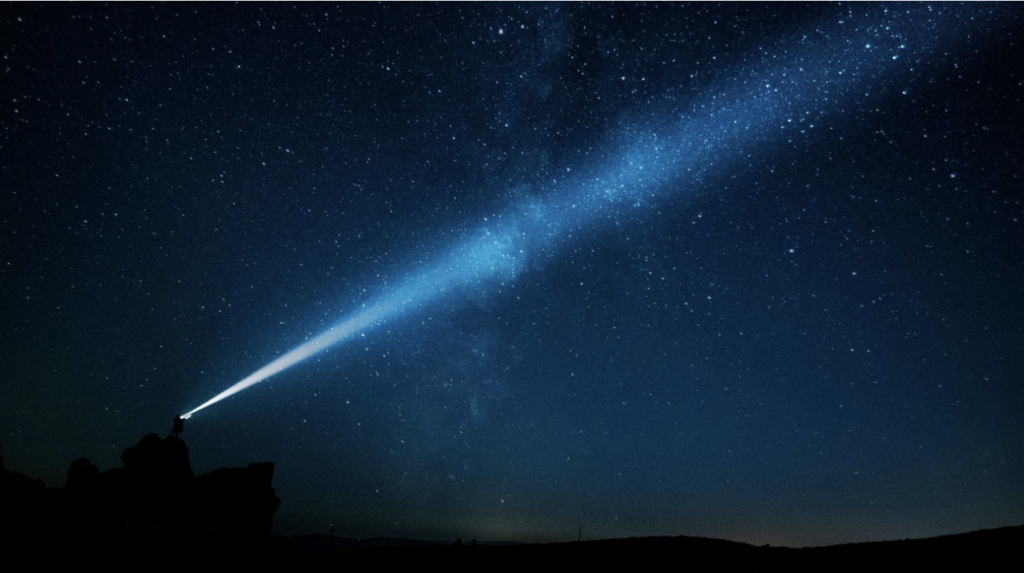
How SRI is helping to understand the Earth’s upper atmosphere.
When the conditions are right at high latitudes, you can look up at the night sky and see a dazzling display of dancing light, the Aurora. The cause of this shimmering fluorescence is charged particles interacting with Earth’s atmosphere stripping atoms and molecules of their electrons and releasing energy. The Aurora’s impressive light show is only visible near the poles, where Earth’s magnetic field accelerates incoming charged particles from the Sun and funnels them into the atmosphere.
Ionization, the phenomenon behind the Aurora, produces many other effects within the atmosphere. For example, solar radiation and cosmic rays constantly pass through the Earth’s atmosphere creating ionized particles. Generally, these particles quickly recombine, but ionization can persist at higher altitudes where particle density is significantly lower. This is the region called the ionosphere.
The ionosphere typically ranges 100–1000 km above the Earth’s surface and blurs the line between the Earth’s atmosphere and outer space. Here, the atmosphere starts to behave like a plasma, consisting of a mix of neutral particles, atomic and molecular ions and electrons. The greater density of charged particles in the upper atmosphere dramatically changes its behavior.
Charged particles (negative electrons and positive ions) are very different from neutral ones, interacting with the Sun and Earth’s magnetic fields and initiating internal electric fields. So instead of gas behaving like fluid, within the ionosphere, gas acts like a fluid containing magnets that constantly push and pull in response to electric and magnetic fields.
While this can seem like a chaotic mess, structures within the plasma still form due to non-uniform electron density (i.e., regions containing high or low numbers of electrons). Again, thanks to the Earth’s magnetic field, these structures are more prevalent in the polar regions where more solar radiation interacts with the atmosphere.
Ionospheric communication breakdowns
Unfortunately, small-scale plasma structures (kilometer scale and smaller) interfere with radio signals traversing the upper atmosphere. Imagine light passing through a glass window. Glass doesn’t absorb light, but its uniform structure allows it to pass straight through with little scattering, reflection or refraction. Now imagine cracking the glass and breaking its uniform structure. Light passing through reflects off the various surfaces along the cracks, making it difficult to see through. Light is much better at propagating through uniform volumes unchanged.

This interaction between radio signals and small-scale plasma structures is known as ionospheric scintillation. It causes rapid and random fluctuations in signal amplitude and phase as the radio waves refract and scatter off the plasma structures within the ionosphere.
Disruptive examples include scintillation reducing the accuracy of GPS systems or severe atmospheric conditions preventing the system from calculating any meaningful positional information at all.
With modern communication and navigation satellites constantly sending and receiving signals through the atmosphere, it is important to understand the conditions that produce scintillation-scale plasma structures. This knowledge could allow future systems to be less susceptible to ionospheric scintillation effects.
This is the idea behind ongoing work within the Center for Geospace Studies (CGS) at SRI International. The center studies the Earth’s upper atmosphere, helping find solutions and providing data to pave the way for discoveries in space science.
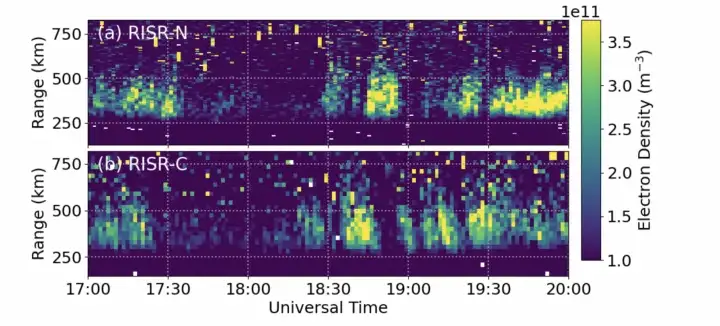
Investigating the formation of small-scale plasma structures was the focus of a recent paper lead-authored by Leslie Lamarche, Research Engineer, CGS, in collaboration with Dr. Kshitija Deshpande and Dr. Matthew Zettergren at the Department of Physical Sciences and Center for Space and Atmospheric Research (CSAR), Embry-Riddle Aeronautical University (ERAU).
The team compared models describing the development of small-scale plasma structures above the polar cap and their interactions with passing signals to real-life observations of scintillation detected by ground receivers.
The research was supported by grants from the National Science Foundation (NSF). It used the ERAU Vega High-Performance Computing Cluster and data from the Resolute Bay Observatory, operated and managed by CGS at SRI with funding from the NSF Upper Atmospheric Facilities Program.
Polar cap patches and gradient drift instability
The ionosphere above the polar cap is exceptionally dynamic, with plasma structures on a range of scales. Polar cap patches are common large-scale structures (essentially, blobs of dense plasma) forming in the polar region that can develop to be hundreds of kilometers wide. They produce small (scintillation) scale plasma structures through various instability mechanisms, particularly gradient drift instability (GDI).
GDI is only expected to produce small-scale structures with some combinations of patch features (gradients, absolute density, velocity etc.), however exactly how these structures develop and produce scintillation is complex. Studies led by CGS use state-of-the-art models informed by direct observations to understand both the formation of small-scale plasma structures in polar cap patches and the resulting scintillation signatures produced.
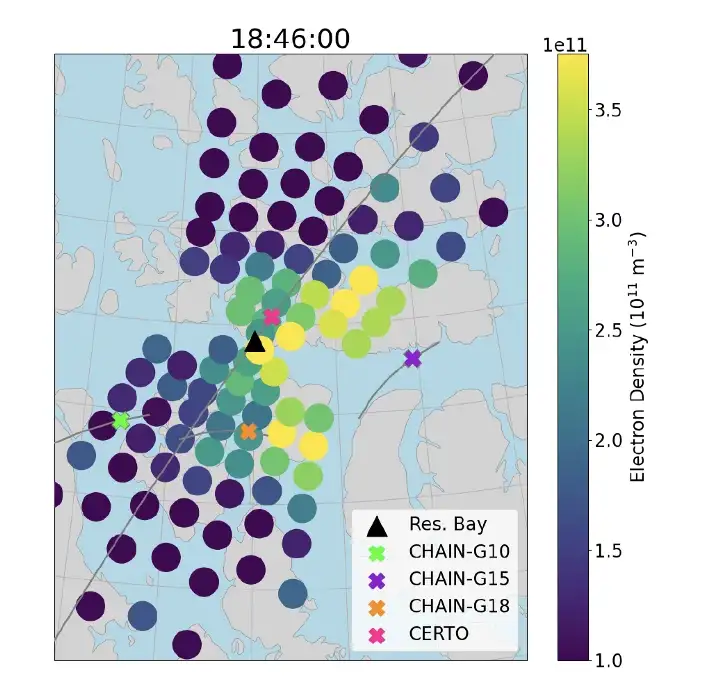
Bringing the results back to Earth
The results of the two models were compared to scintillation data from collocated multi-frequency ground receivers. Through a cooperative agreement with the NSF, SRI operates one radar system near Resolute Bay in the polar region at the northern tip of the American continent, with an identical radar system built by SRI on the same site operated by the University of Calgary.

Measurements from the Resolute Bay Incoherent Scatter Radars (RISR) were plugged into a physics-based plasma model known as the Geospace Environment Model for Ion-Neutral Interactions (GEMINI). GEMINI simulates the development of small-scale plasma structuring within and around an idealized polar cap patch. Next, the Satellite-beacon Ionospheric scintillation Global Model of the upper Atmosphere (SIGMA) simulated a passing signal in order to predict scintillation effects at different stages of structural development.
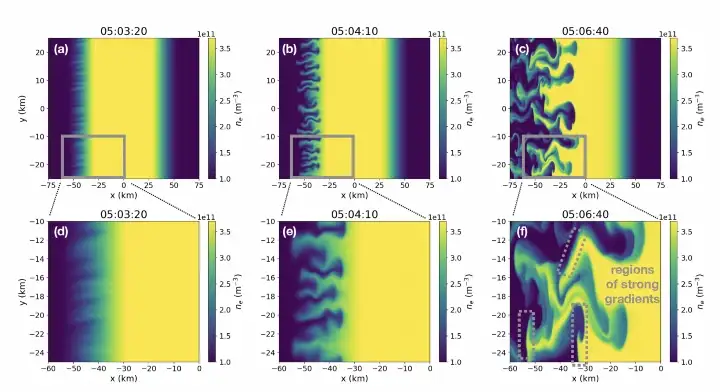
These systems are technically referred to as Advanced Modular Incoherent Scatter Radar (AMISR). AMISR data allows CGS to measure structures in the ionosphere, determining the density and velocity of the plasma. On a separate note, AMISR technology also forms the basis of SRI spin-out company LeoLabs, helping protect satellites from colliding with space debris in low-earth orbit.
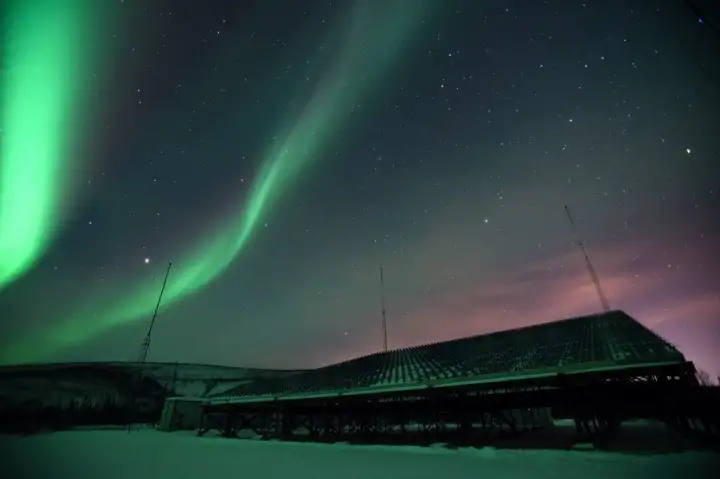
The modeled scintillation signatures were compared to scintillation data from receivers in Resolute Bay for three different frequencies to infer characteristics of plasma structuring and their effect on radar signals. These receivers make high-resolution measurements of signals transmitted from orbiting satellites and track variations in the signal due to ionospheric scintillation. The closer they are, the better the model simulates real-life phenomena.
While there were similarities in peak-to-peak amplitudes between the simulated and observed scintillation data, significant differences in the spectra remain. Therefore, further work and more detailed modeling are needed to conclusively identify the processes behind small-scale structuring within polar cap patches. However, this work is a vital step for ionospheric modeling based on direct measurements.
Resource
L. J. Lamarche, K. B. Deshpande, and M. D. Zettergren
Observations and modeling of scintillation in the vicinity of a polar cap patch
J. Space Weather Space Clim., 2022
